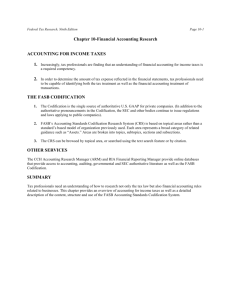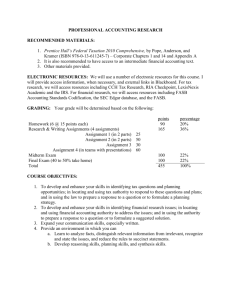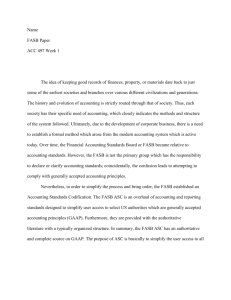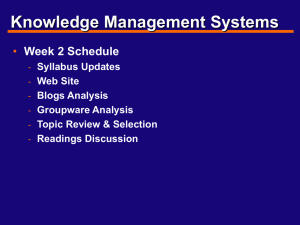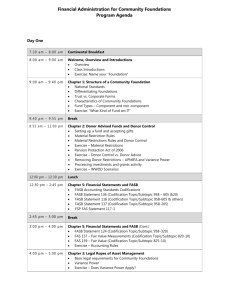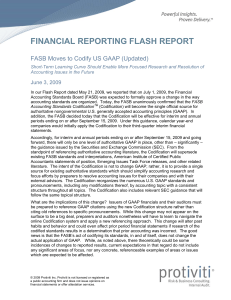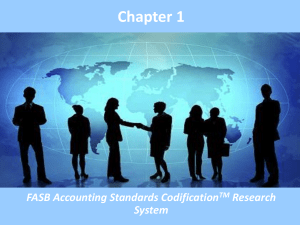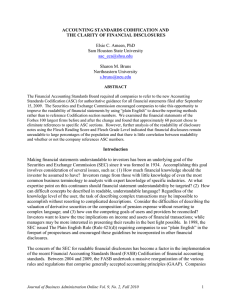321 Ch1 Answers to questions SP'15
advertisement
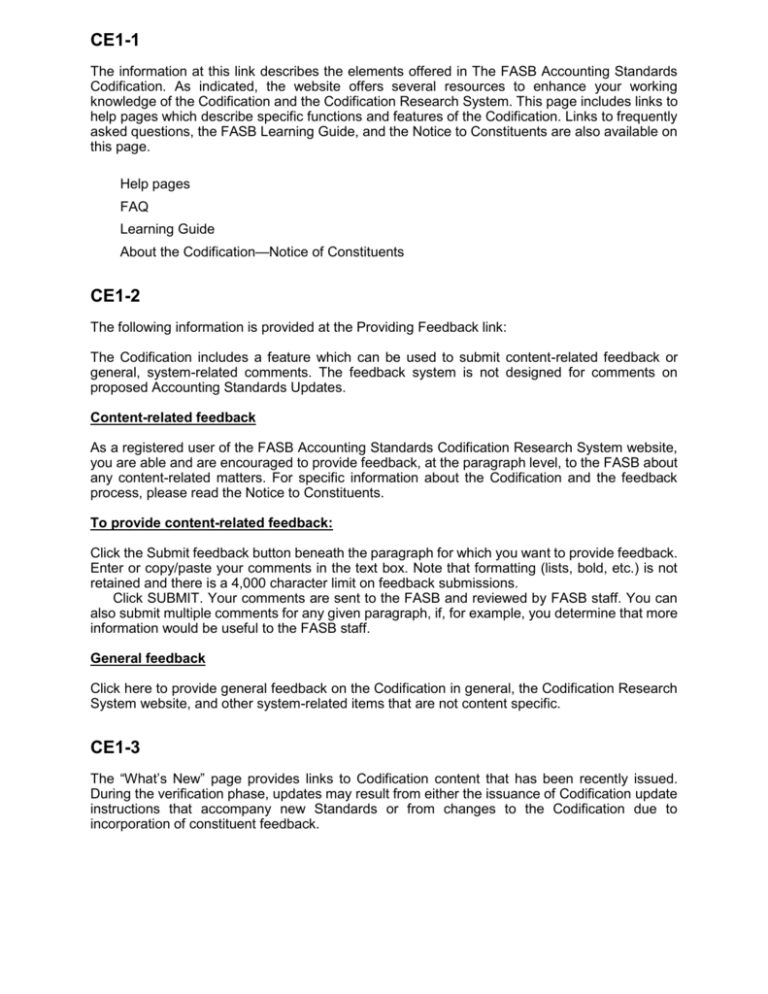
CE1-1 The information at this link describes the elements offered in The FASB Accounting Standards Codification. As indicated, the website offers several resources to enhance your working knowledge of the Codification and the Codification Research System. This page includes links to help pages which describe specific functions and features of the Codification. Links to frequently asked questions, the FASB Learning Guide, and the Notice to Constituents are also available on this page. Help pages FAQ Learning Guide About the Codification—Notice of Constituents CE1-2 The following information is provided at the Providing Feedback link: The Codification includes a feature which can be used to submit content-related feedback or general, system-related comments. The feedback system is not designed for comments on proposed Accounting Standards Updates. Content-related feedback As a registered user of the FASB Accounting Standards Codification Research System website, you are able and are encouraged to provide feedback, at the paragraph level, to the FASB about any content-related matters. For specific information about the Codification and the feedback process, please read the Notice to Constituents. To provide content-related feedback: Click the Submit feedback button beneath the paragraph for which you want to provide feedback. Enter or copy/paste your comments in the text box. Note that formatting (lists, bold, etc.) is not retained and there is a 4,000 character limit on feedback submissions. Click SUBMIT. Your comments are sent to the FASB and reviewed by FASB staff. You can also submit multiple comments for any given paragraph, if, for example, you determine that more information would be useful to the FASB staff. General feedback Click here to provide general feedback on the Codification in general, the Codification Research System website, and other system-related items that are not content specific. CE1-3 The “What’s New” page provides links to Codification content that has been recently issued. During the verification phase, updates may result from either the issuance of Codification update instructions that accompany new Standards or from changes to the Codification due to incorporation of constituent feedback. ANSWERS TO QUESTIONS 1. Financial accounting measures, classifies, and summarizes in report form those activities and that information which relate to the enterprise as a whole for use by parties both internal and external to a business enterprise. Managerial accounting also measures, classifies, and summarizes in report form enterprise activities, but the communication is for the use of internal, managerial parties, and relates more to subsystems of the entity. Managerial accounting is management decision oriented and directed more toward product line, division, and profit center reporting. 2. Financial statements generally refer to the four basic financial statements: balance sheet, income statement, statement of cash flows, and statement of changes in owners’ or stockholders’ equity. Financial reporting is a broader concept; it includes the basic financial statements and any other means of communicating financial and economic data to interested external parties. Examples of financial reporting other than financial statements are annual reports, prospectuses, reports filed with the government, news releases, management forecasts or plans, and descriptions of an enterprise’s social or environmental impact. 3. If a company’s financial performance is measured accurately, fairly, and on a timely basis, the right managers and companies are able to attract investment capital. To provide unreliable and irrelevant information leads to poor capital allocation which adversely affects the securities market. 4. The objective of general purpose financial reporting is to provide financial information about the reporting entity that is useful to present and potential equity investors, lenders, and other creditors in decisions about providing resources to the entity through equity investments and loans or other forms of credit. Information that is decision-useful to capital providers (investors) may also be useful to other users of financial reporting who are not investors. 5. Investors are interested in financial reporting because it provides information that is useful for making decisions (referred to as the decision-usefulness approach). When making these decisions, investors are interested in assessing the company’s (1) ability to generate net cash inflows and (2) management’s ability to protect and enhance the capital providers’ investments. Financial reporting should therefore help investors assess the amounts, timing, and uncertainty of prospective cash inflows from dividends or interest, and the proceeds from the sale, redemption, or maturity of securities or loans. In order for investors to make these assessments, the economic resources of an enterprise, the claims to those resources, and the changes in them must be understood. 7. General-purpose financial statements are not likely to satisfy the specific needs of all interested parties. Since the needs of interested parties such as creditors, managers, owners, governmental agencies, and financial analysts vary considerably, it is unlikely that one set of financial statements is equally appropriate for these varied uses. 16. Rule 203 of the Code of Professional Conduct prohibits a member of the AICPA from expressing an opinion that financial statements conform with GAAP if those statements contain a material departure from an accounting principle promulgated by the FASB, or its predecessors, the APB and the CAP, unless the member can demonstrate that because of unusual circumstances the financial statements would otherwise have been misleading. Failure to follow Rule 203 can lead to a loss of a CPA’s license to practice. This rule is extremely important because it requires auditors to follow FASB standards.
